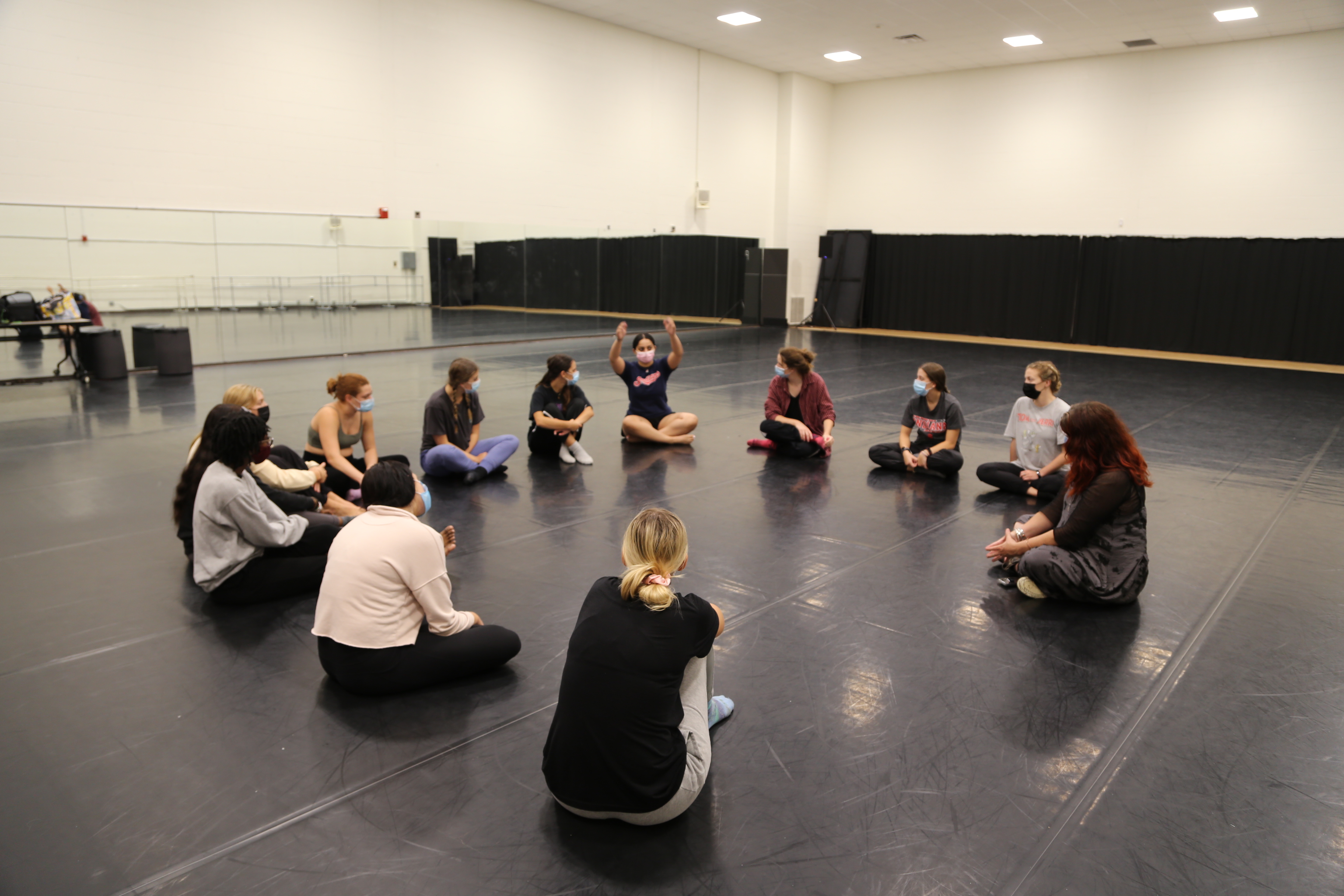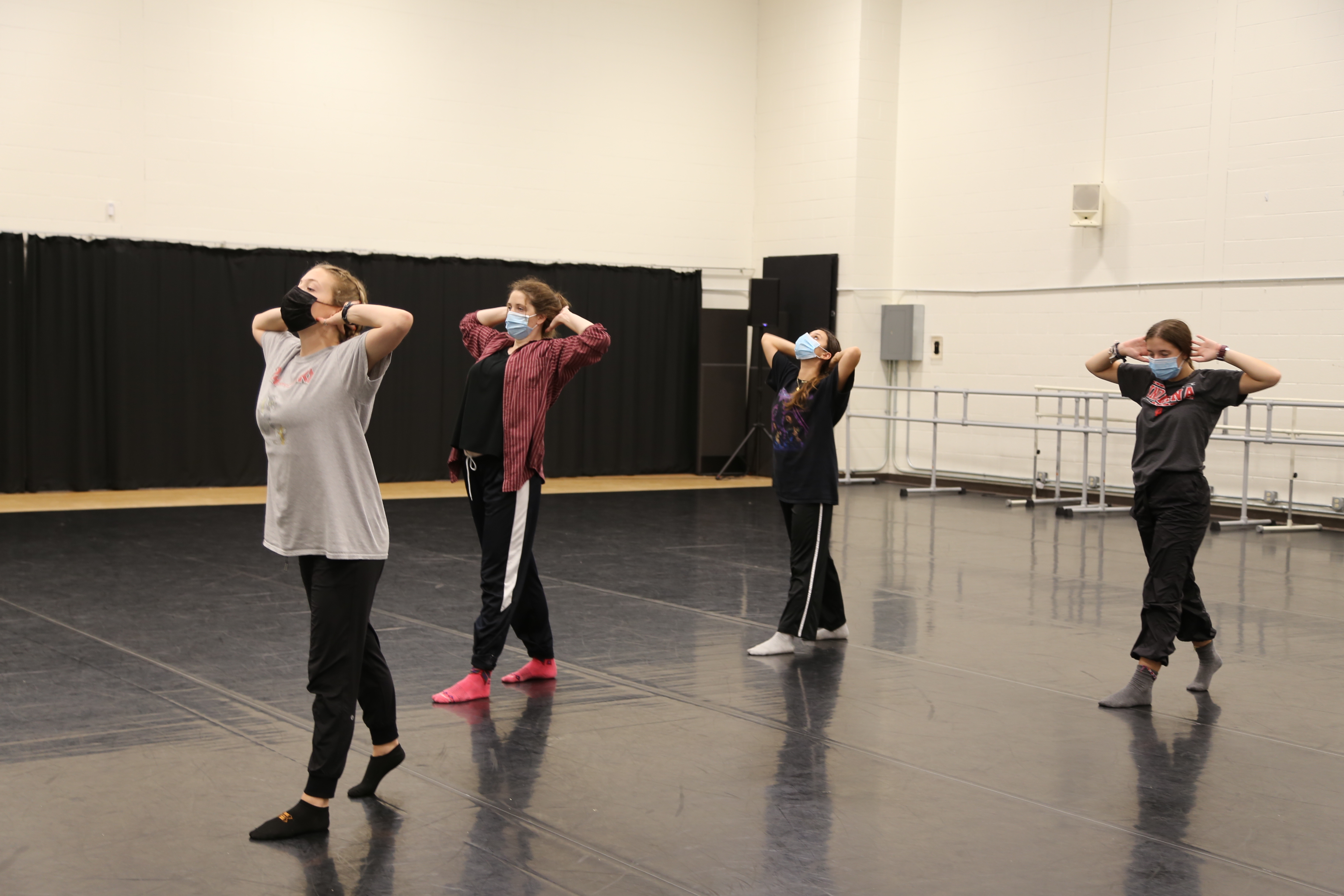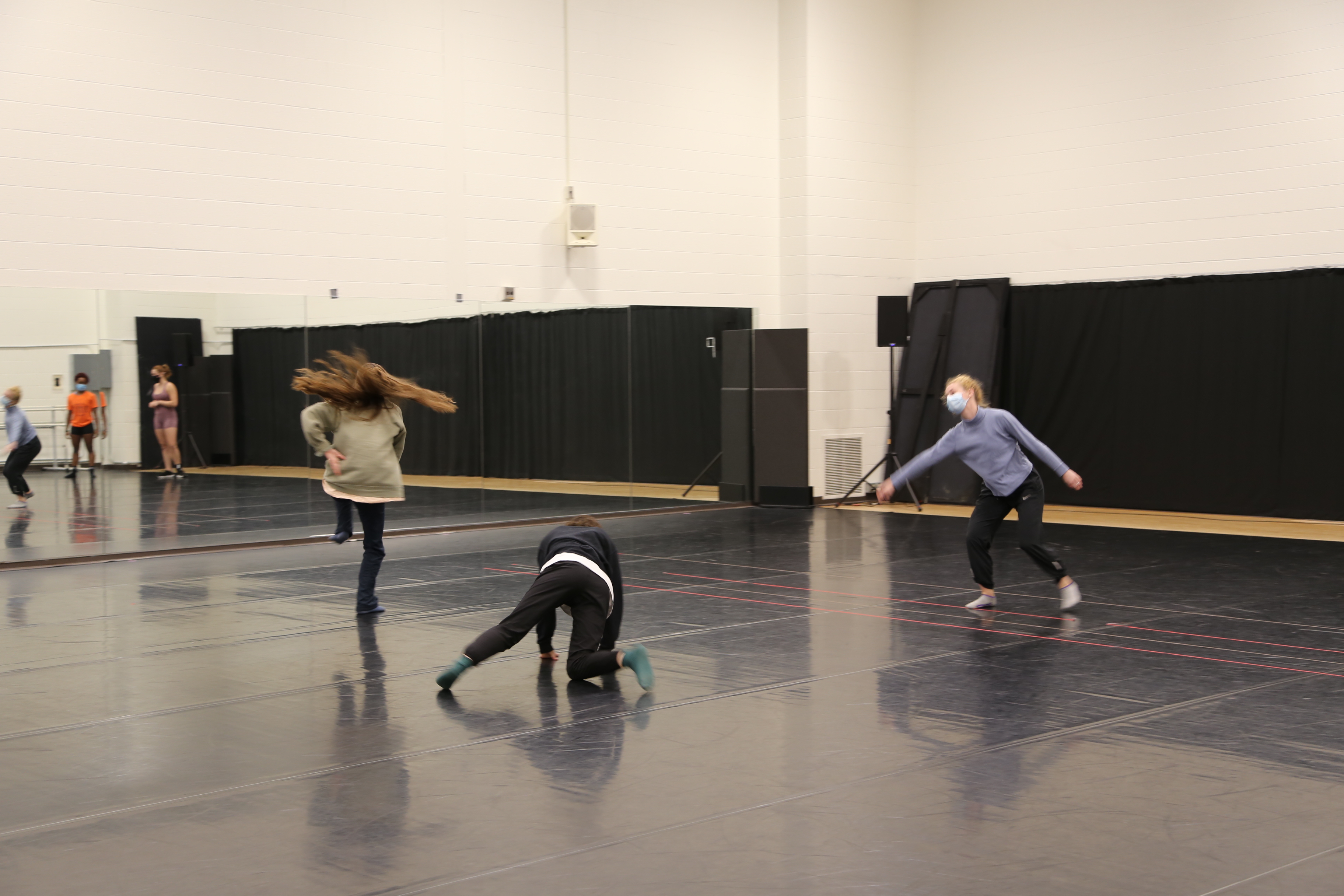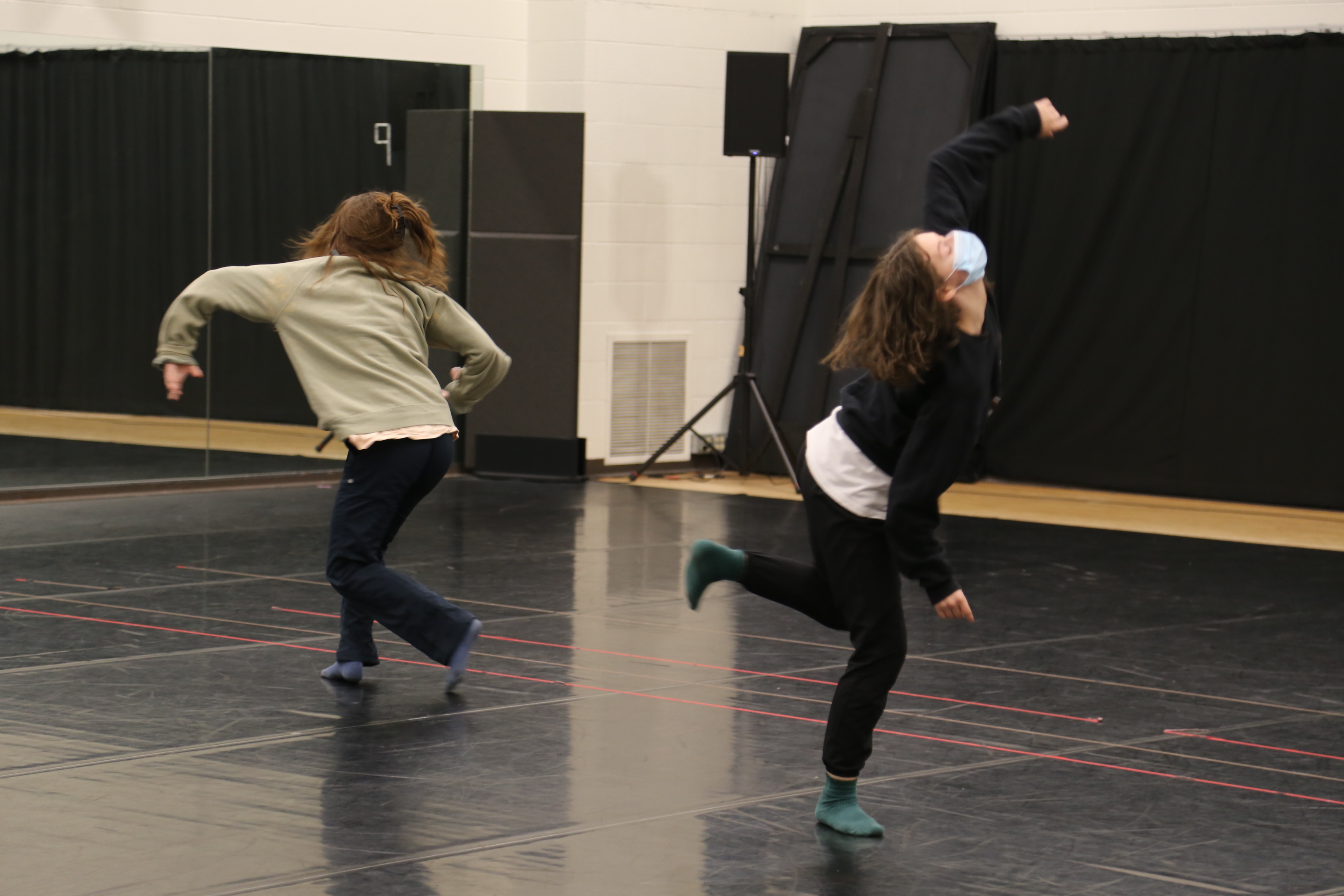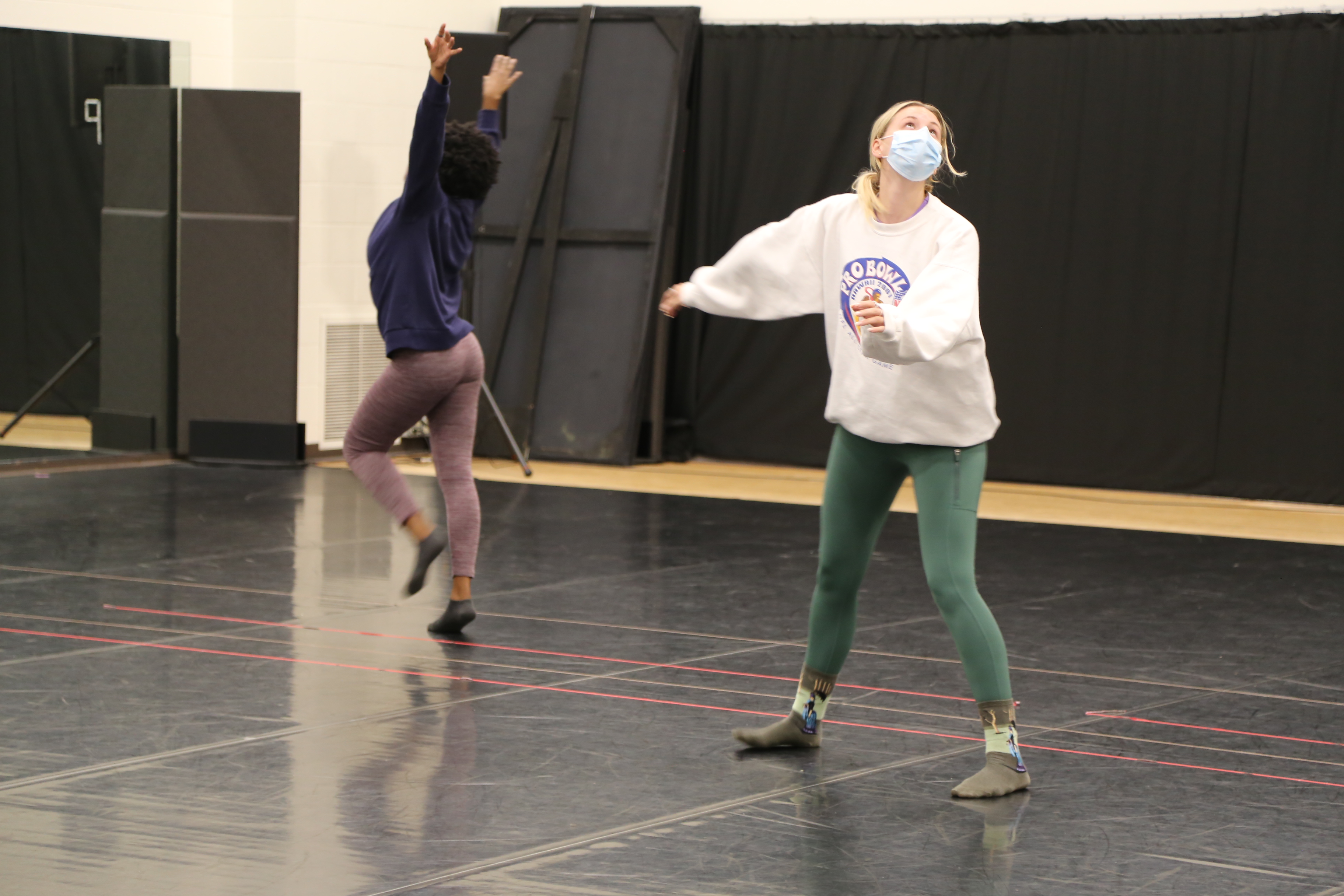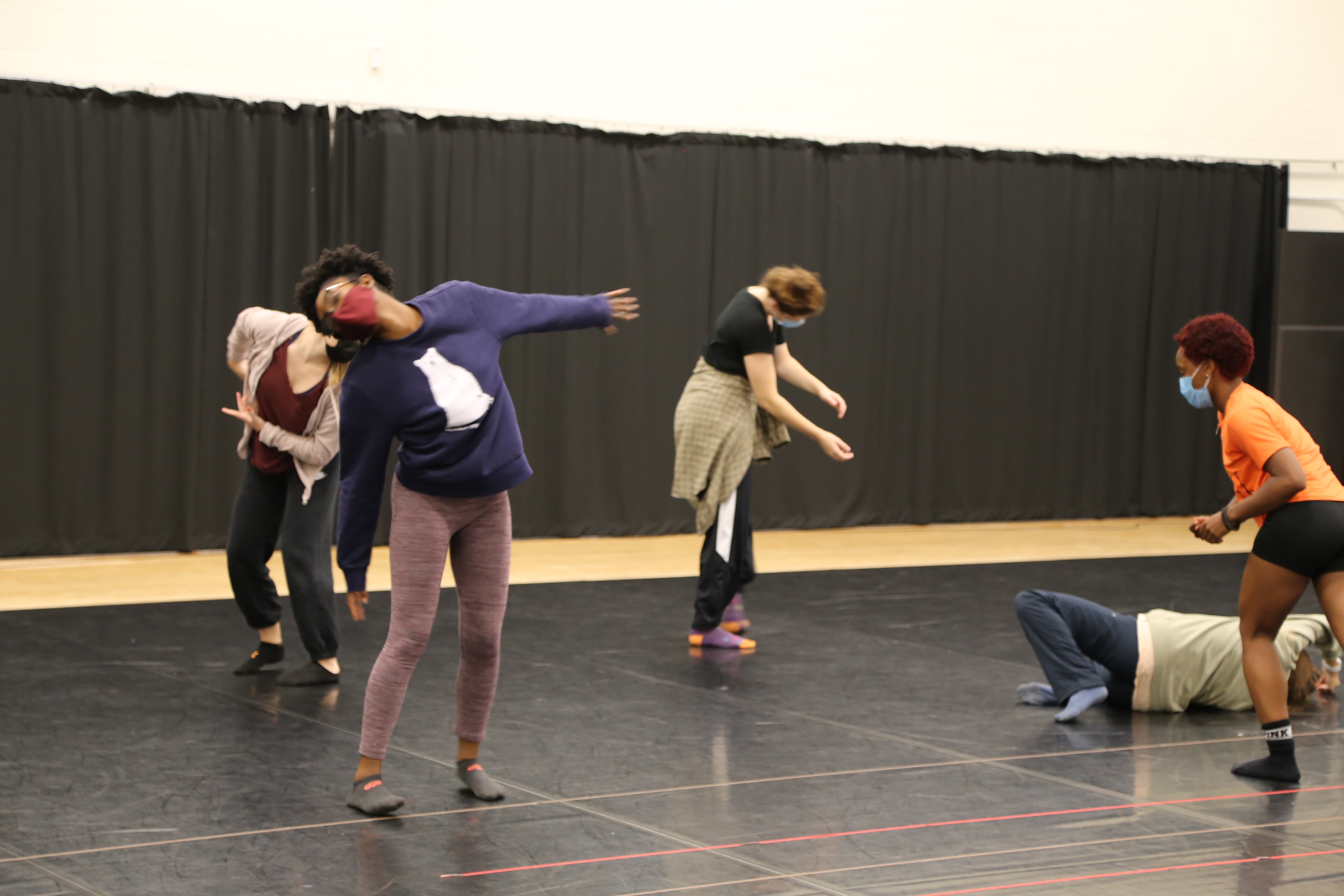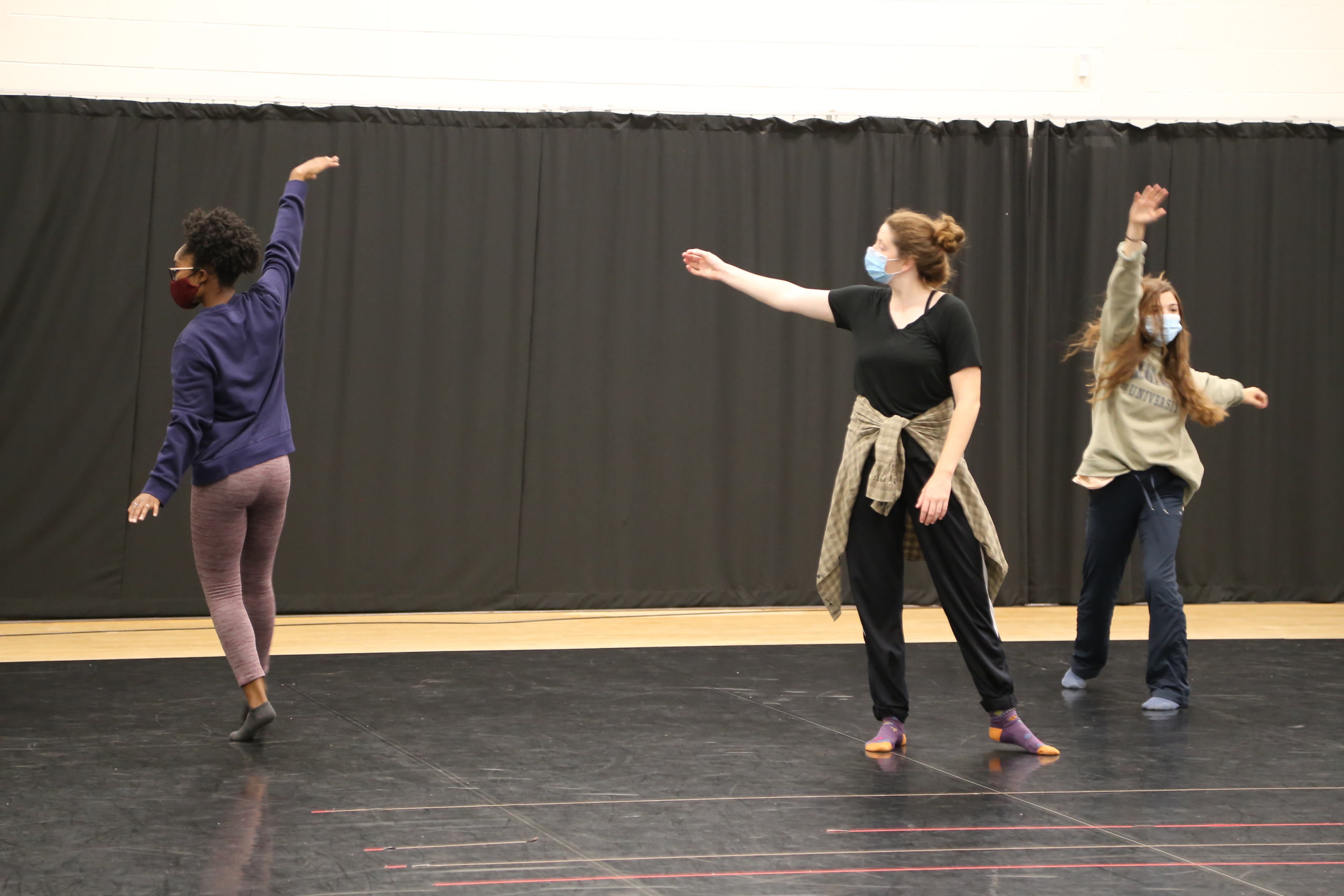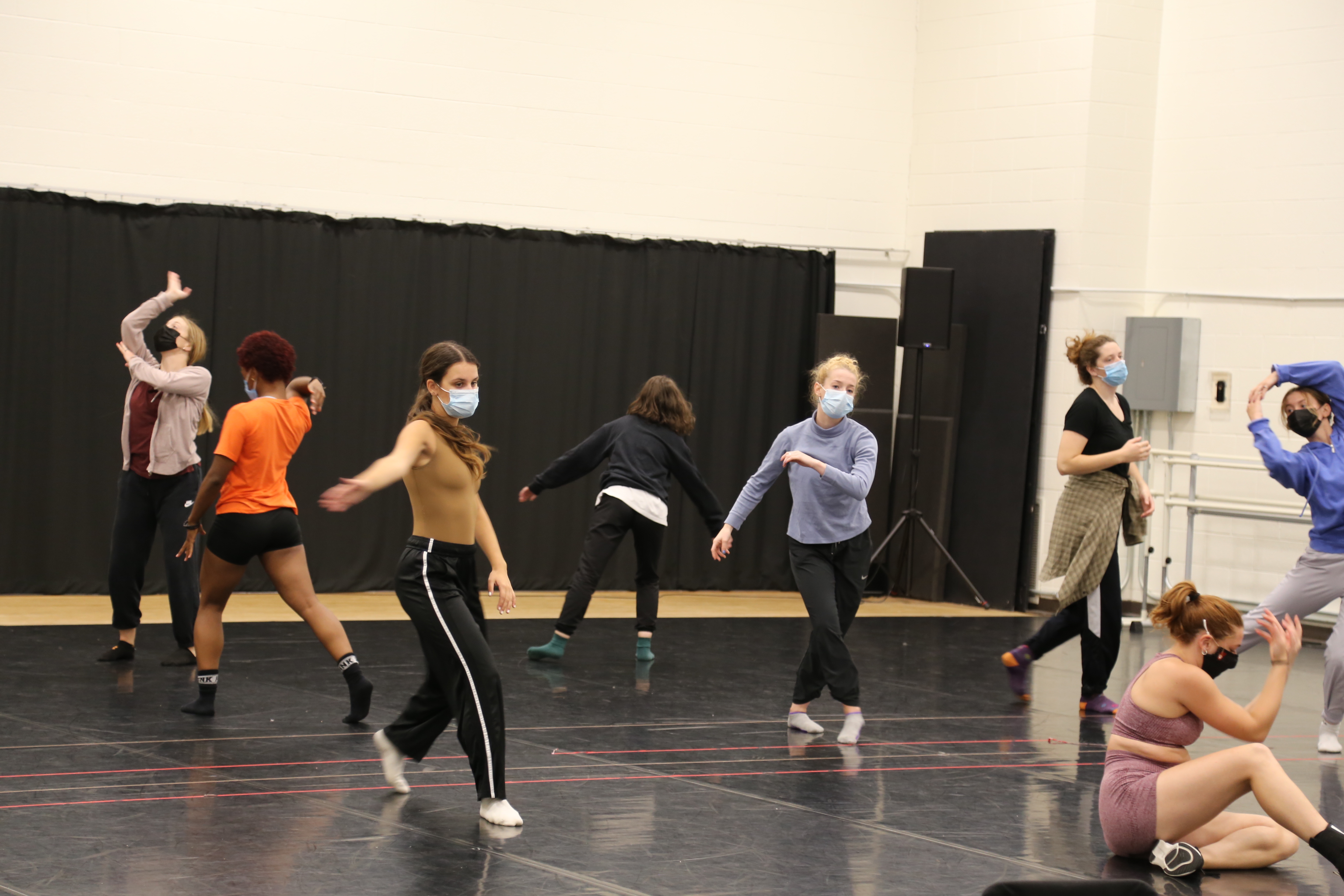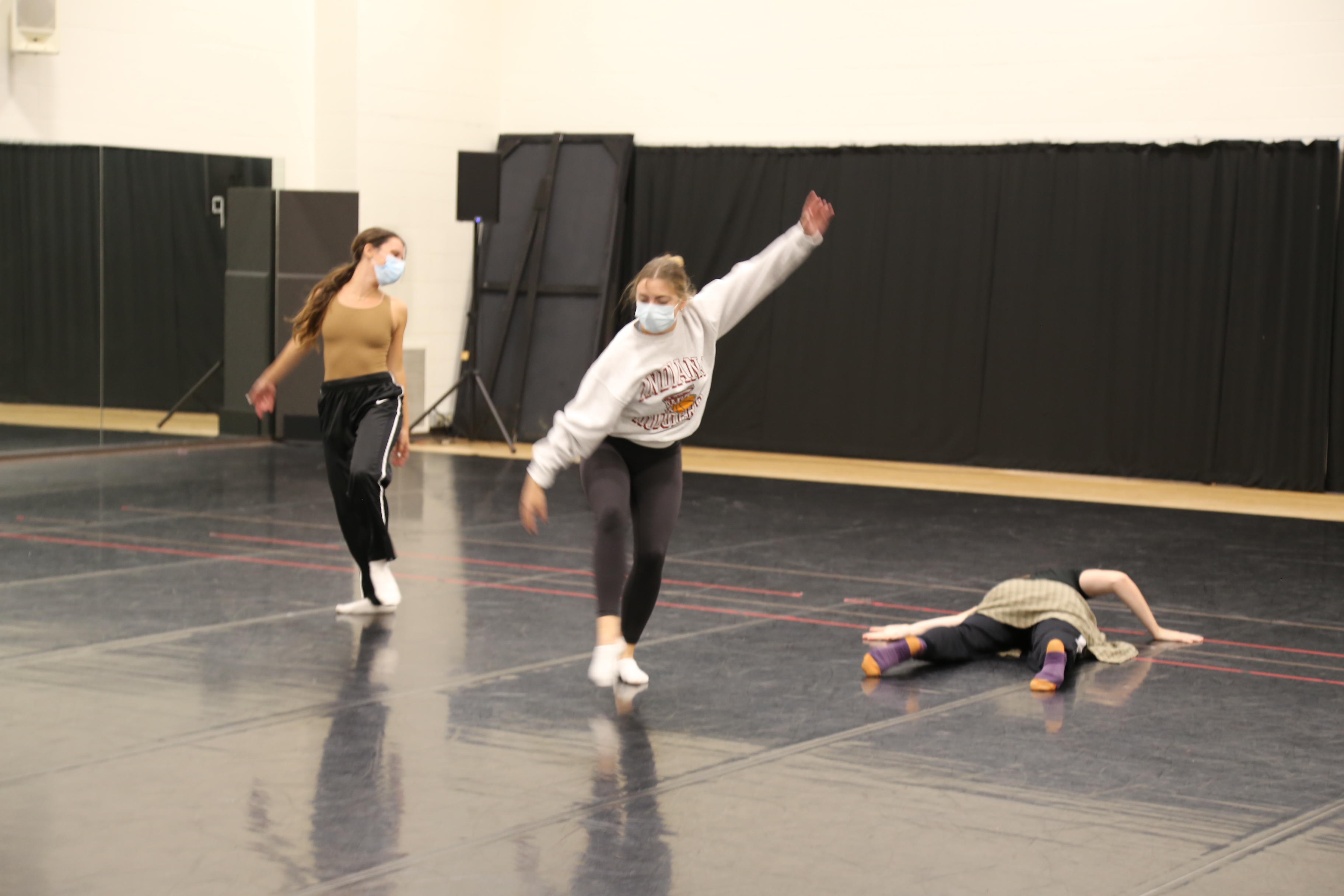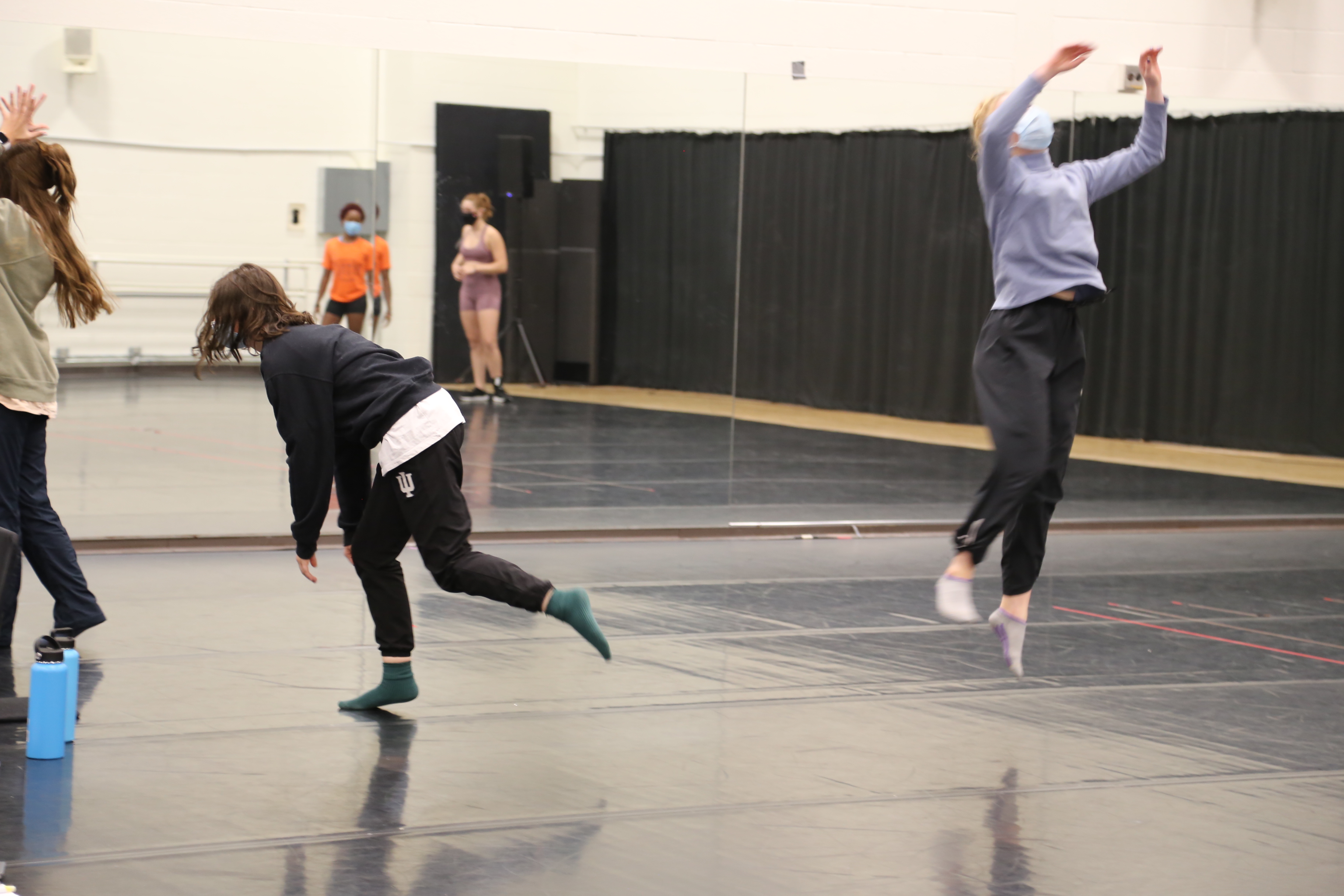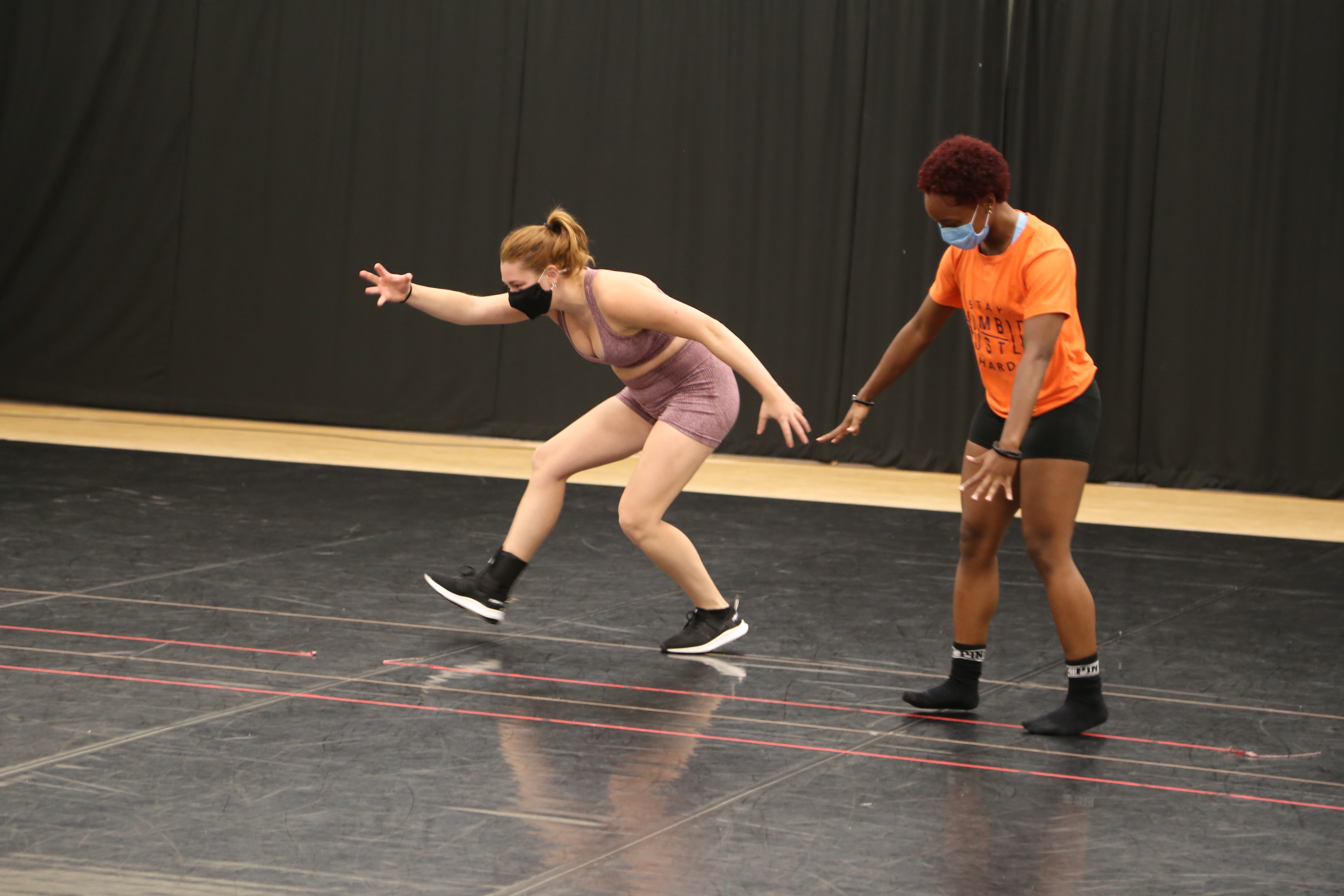Please reference this article as Theatron Vol. 15, No. 4. (2021): 45–53. (See the PDF file at the end of the Table of Contents.)
College Dance Programs in the United States retain a strong strain of Austro-Hungarian performer, and movement philosopher, Rudolf Van Laban’s concepts of embodiment. Courses that involve the process of analyzing and articulating body movement are historically emblematic of contemporary university dance curricula. Laban Movement Analysis (LMA) is offered as a foundational course to support study in choreography and dance pedagogy. Laban’s roots in the Hungarian Avant Garde are not often featured in these praxis classes, yet the ideas underpin Laban’s original theories of the interaction of human body movement in space. LMA concepts are distilled around a framework of Body, Effort, Shape and Space (B.E.S.S.) The work is taught in college dance programs to discuss, analyze and more deeply understand and express human movement. (All photographs by Anjali Varma.)
- Classes for undergraduate students in a Bachelor of Fine Arts BFA) degree in dance at Indiana University, Bloomington taught by Selene Carter, MFA, are offered in the third year of the curriculum. Students are introduced to the concepts in a lecture format, and then led to explore the concepts physically in an improvised setting. FIG. 1
-
Students work together in small groups applying Laban theories to their movement and becoming familiar with terminology. Here the students are performing a simple choreographed phrase and identifying Laban’s ‘still form’ of familiar shapes that he identified as commonly coming to rest in. Wall, Ball, Pin, Sphere, Screw, Pyramid are still forms in the Shape category of LMA. The dancers are finding the process of shaping from one still form to the next in their common dance phrase. They identified that this was a moment of pin becoming wall, moving from narrow and elongated to wide and stable. FIG. 2
-
In the Effort framework, dancers discover a range of movement qualities, the ‘how’ of the movement that is both functional and expressive. The dancers are exploring combining the Effort factor of focus in space, on the spectrum of indirect or multi-focus to direct or pin-point focus, with the idea of shaping to the still forms. FIG. 3
-
The Effort Factors of Focus in Space; direct/indirect, attention to Time; sudden/sustained, Attention to Flow; bound/free, and use of Weight intention; light/strong are combined to create States (the pairing of two effort factors for example Weight plus Time) and Drives (the pairing of three effort factors for example focus in Space, Flow and Weight). Dancers are exploring Effort Drives and pairings of effort intentions. FIG. 4
-
Focus in Space and the focus of vision of Eye Tracking, coordinating the movement of eye focus in space or on a specific body part is an integrating and organizing factor to synchronize body movement in space. FIG. 5
-
The pairing of concepts in lemniscate relationships is often used to learn concepts. Finding the opposites in a thematic polar frame is helpful to discover the range of expressive and functional possibilities in movement. Here the dancers are exploring strong/light weight application and direct/indirect focus in space. FIG. 6
-
Indirect focus in space, the experience of scanning and seeing everything at once is both perceptual and creates a dynamic quality to the movement. FIG. 7
-
Exploring the Effort qualities in all parts of the body, embodying the feeling through the macro or smaller unites parts of the body, with the macro, finding the state of being in the whole self is helpful to find embodiment versus imitating or acting. FIG. 8
-
When exploring LMA concepts the individual dancer explores a specific idea in their own way, yet the overall group focus contributes to the learning. Building and layering the understanding through witnessing and being with a larger group mind approach. FIG. 9
-
The dancers are encouraged to utilize poetic and visual images to access states of Effort exploration. Where move with direct focus in space and sustained time might not be as effective, the cue to move as if you are emitting a surgical laser beam out of the ends of your limbs, and you are moving through thick syrup might engage the movers with more embodied imagination. FIG. 10
-
Concepts of body function always in relationship to space, or the mover’s immediate environment are intrinsic to the movers’ choices. FIG. 11
-
In the Laban studies the dancer can break out of learned, habitual training modes and find new possibilities for expression and deep discovery of more efficient ways of patterning their movement. FIG. 12
-
When an approach is seeded in the body based on Effort the movement often feels physically effortless. The dancer air bound is exploring the Lightness in the Effort factor of Weight. FIG. 13
-
Creative, imaginative, playful narratives emerge when dancers explore the concepts of embodiment. Dancers are playing with finding Halloween Characters in the States and Drives of the Effort work. FIG. 14


